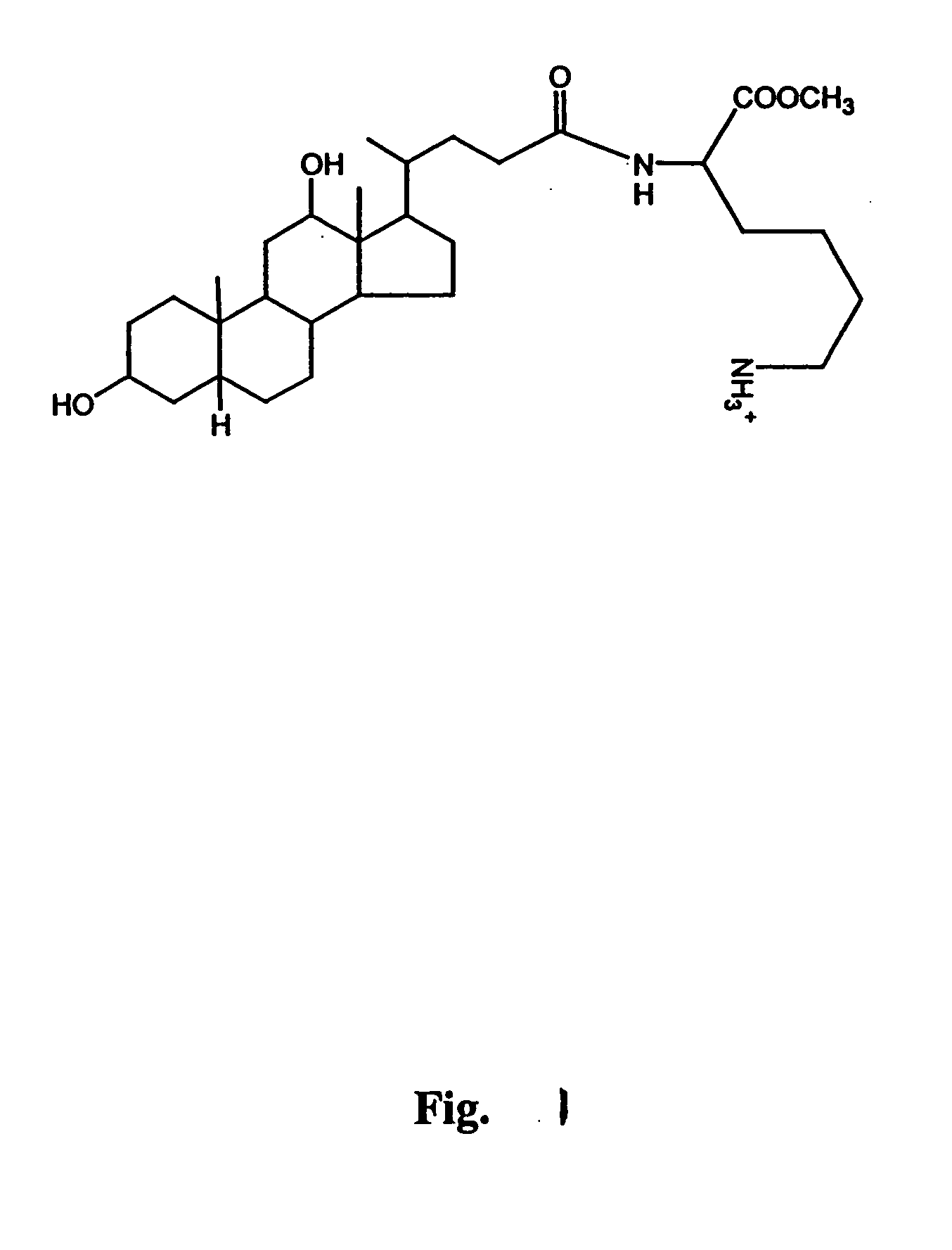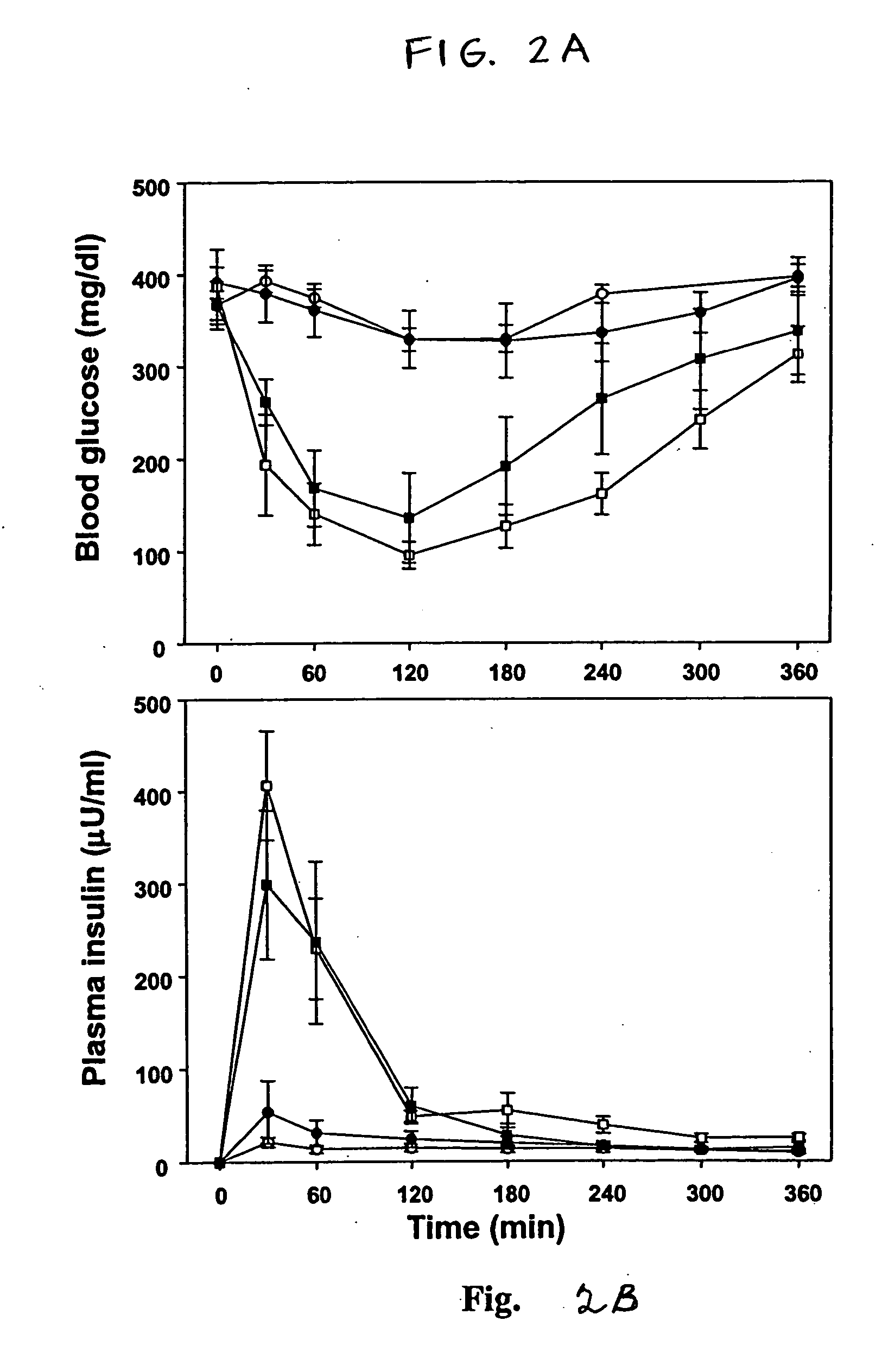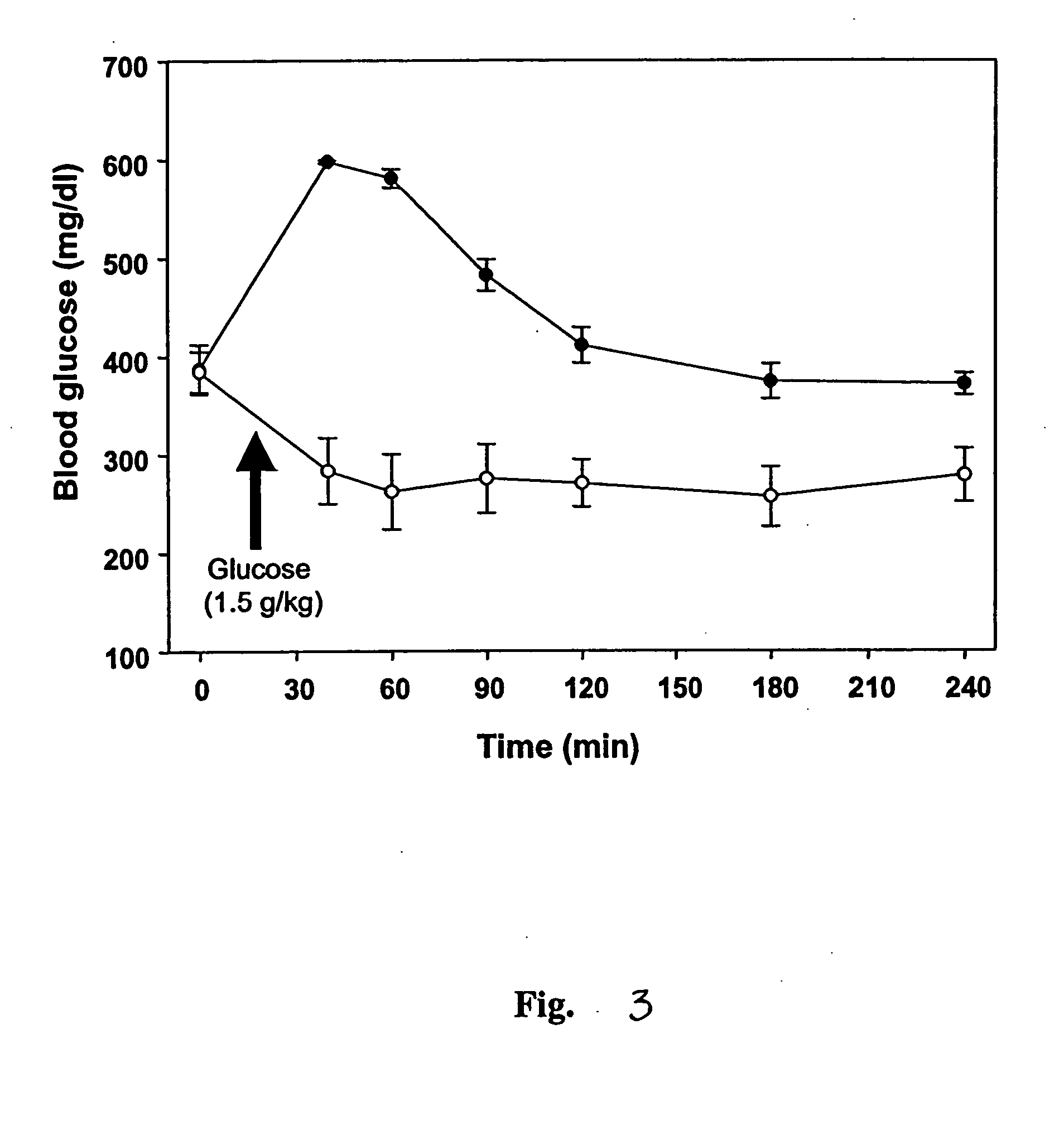Delivery Agents for enhancing mucosal absorption of therapeutic agents
a technology of delivery agents and therapeutic agents, applied in the direction of dispersion delivery, macromolecular non-active ingredients, peptide/protein ingredients, etc., can solve the problems of ineffectiveness or destruction of agents, limited conventional means for delivering biologically active agents, etc., to achieve the effect of increasing the lipophilicity of bioactive agents, reducing solubility problems, and increasing the interaction between bioactive agents and delivery agents
- Summary
- Abstract
- Description
- Claims
- Application Information
AI Technical Summary
Benefits of technology
Problems solved by technology
Method used
Image
Examples
example 1
Preparation of Nα-deoxychoyl-L-lysine-methylester
[0069] Deoxycholic acid (200 mg, 0.5 mmol) and N-hydroxysuccinimide (76 mg, 0.67 mmol) were dissolved in anhydrous terahydrofuran (20 ml). To this solution, 1,3-dicyclohexylcarbodiimide (136 mg, 0.67 mmol) was added and stirred at 4° C. for 6 h. Urea derivatives were removed by filtration, the filtrate was poured into cold n-hexane (120 ml), and precipitates were dried under reduced pressure. The resulting succinimidodeoxycholate (230 mg, 0.48 mmol) was then reacted with the primary amine group of Nε-tBOC-Lys-OCH3 (150 mg, 0.58 mmol) in dimethyformamide (10 ml) containing triethyl amine (200 μl, 1.7 mmol) for 12 h at room temperature. After reaction, the mixture was diluted with ethylacetate (30 ml) and successively washed with 10 ml of 0.5 N HCl, distilled water, 0.5 N NaOH, and distilled water. The organic phase was dried against magnesium sulfate and evaporated to dryness. The protected ε-amine group of the lysine residue was depr...
example 2
In Vivo Evaluation of Delivery Agent / insulin for Oral Formulation
[0070] An oral insulin formulation was prepared by mixing of human insulin and an illustrative delivery agent according to the present invention, i.e., Nα-deoxychoyl-L-lysine-methylester, which was prepared according to the procedure of Example 1. Zinc human insulin was dissolved in a small volume of 5 mmol / l HCl and diluted with PBS (10 mM, pH 7.4) to a final concentration 42 U / ml as a stock solution. The delivery agent was dissolved in PBS (1.5 mg / ml). Insulin complexes were prepared by addition of a predetermined dose of delivery agent solution to insulin solution while vortexing. Insulin complexes were then orally administered to rats in liquid form using a gavage needle.
[0071] Female Sprague-Dawley rats (230-250 g) were housed in stainless steel metabolic cages and fed with rodent chow. After an initial 3-day acclimation period, the rats were fasted for 12 h before inducing diabetes mellitus. Streptozotocin (ST...
example 3
Stability Towards Proteolysis
[0074] Insulin (100 μl, 1 mg / ml) and an equivalent amount of insulin / DCK (1:1, w / w) mixture were prepared in HEPES buffer (50 mmol / l; pH 7.4). Then, α-chymotrypsin (10 μl, 150 μg / ml) was added and the solutions were incubated at 37° C. At the indicated time points, aliquots were acidified with 890 μl of 0.1% trifluoroacetic acid. Each sample (containing 100 μg of protein at t=0) was analyzed by reversed-phase high performance liquid chromatography (HPLC, Shimadzu, Tokyo, Japan) on a C18 Bondapak® column (Waters Associates, Milford, Mass., USA) with a linear gradient of 5%-60% solvent B (solvent A: 0.1% trifluoroacetic acid; solvent B: 0.1% trifluoroacetic acid in 95% acetonitrile) over 55 min. The protein peak area at t=0 was designated as 100%. The results of the test are illustrated in FIG. 4. These results show that mixture of a delivery agent according to the present invention with insulin protects the insulin from proteolytic degradation as compar...
PUM
| Property | Measurement | Unit |
|---|---|---|
| Mass | aaaaa | aaaaa |
| Mass | aaaaa | aaaaa |
| Molecular weight | aaaaa | aaaaa |
Abstract
Description
Claims
Application Information
 Login to View More
Login to View More - R&D
- Intellectual Property
- Life Sciences
- Materials
- Tech Scout
- Unparalleled Data Quality
- Higher Quality Content
- 60% Fewer Hallucinations
Browse by: Latest US Patents, China's latest patents, Technical Efficacy Thesaurus, Application Domain, Technology Topic, Popular Technical Reports.
© 2025 PatSnap. All rights reserved.Legal|Privacy policy|Modern Slavery Act Transparency Statement|Sitemap|About US| Contact US: help@patsnap.com



